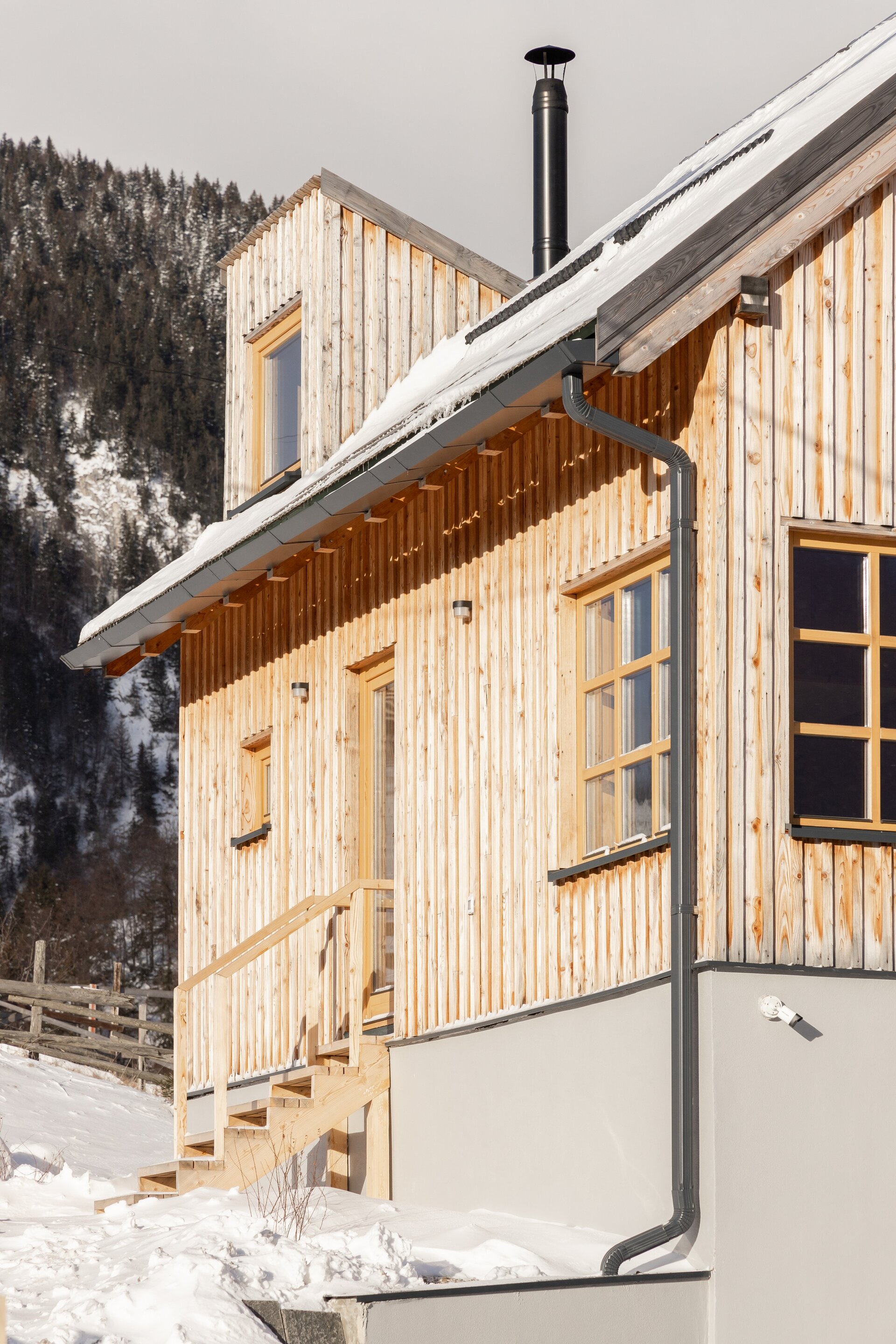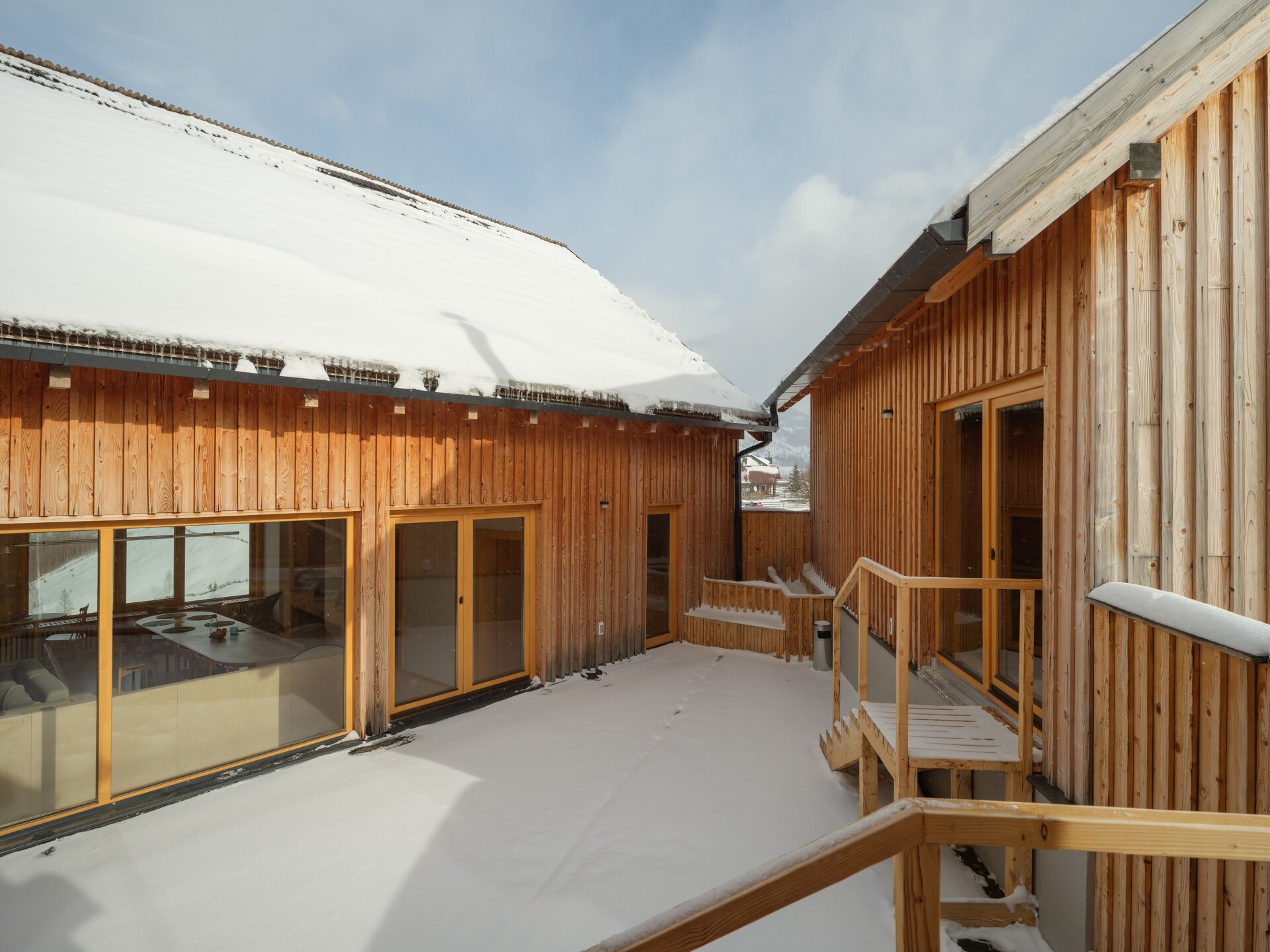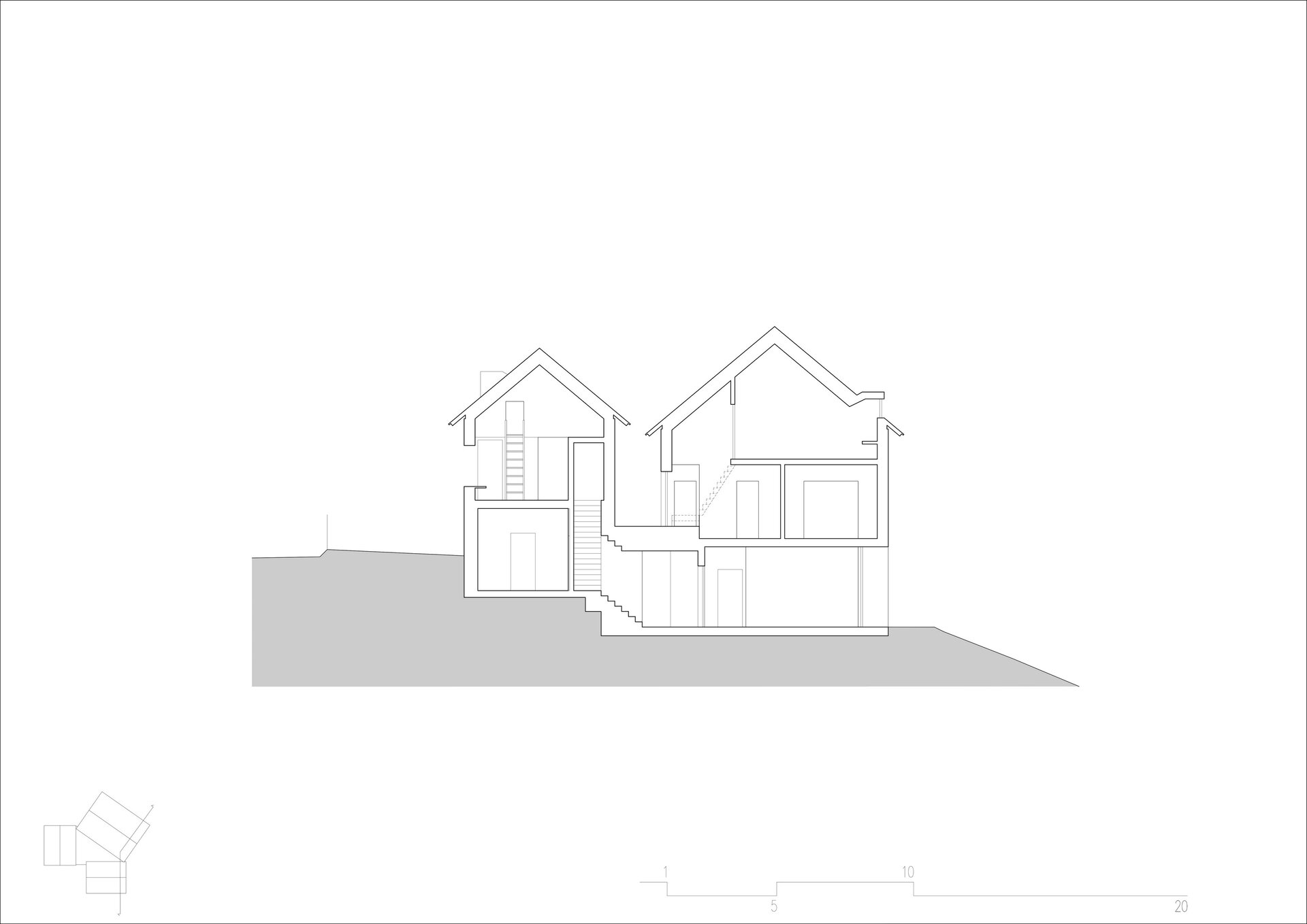
- Prize of the “Built Architecture / Public Architecture” section
IKI Retreat Măgura
Authors’ Comment
The village of Măgura is situated at an altitude of 1,000 meters, nestled between the Piatra Craiului and Bucegi Mountains, within the commune of Moeciu in Brașov. This location is an integral part of the protected area of Piatra Craiului National Park, which necessitates particular attention in formulating conditions for recreation and tourism, without perturbing the area's representative natural and anthropogenic ecosystems.
In this context, environmental factors are not merely a backdrop for design but instead dictate the core and characteristics of the project. Design elements such as roof pitch, dormer windows, material structure, volume fragmentation, window subdivisions, thatch coverage, and the relationship with the terrain draw inspiration and adaptation from the built landscape of Măgura village.
The House at Măgura aims to reinterpret traditional dwelling typologies—ranging from enclosed housing, various functional volumes, and rural scales—fittingly balanced with its status as a protected natural area endowed with significant ecotourism potential. The desired area for accommodation units and common spaces is distributed across three principal structures—three archetypal volumes arranged at different elevations and articulated in various configurations. Arranged in a courtyard formation, they delineate an external chamber—a small, triangular, protected yard that serves as a pendant to the three independent constructions. Each house maintains autonomy through its volume, usage, and the unique relationships it establishes with the landscape, allowing the latter to predominate.
The houses come close but do not touch; it is the plinth that unifies them. The plinth serves as a cohesive agent, absorbing level differences and exploiting the slope, thereby establishing a unified character. The ensemble evokes the spirit of a traditional household, consisting of a main house and two ancillary structures, all forming a homogenous functional system governed by traditional functionality.
The predominant materials—wood and concrete—preserve their intrinsic essence and texture while working cohesively. Untreated wood provides, beyond its tactile value, a visual chronicle that assimilates the signs of time and environmental adaptation. This harmonizes with adjacent structures, which bear a robust vernacular character, successively imprinted by temporal passage and specific climatic conditions of the region.
The three constructions correspond to the seven accommodation units and their shared spaces—featuring a double-height living area, a kitchen, a tea and reading room, a library, and a sauna—all designed to encourage communal time-spending. These spaces are conceived in relation to the surrounding nature and the vistas that the site permits. Each space benefits from independent, direct exterior access either at ground level or above the plinth. The spaces are connected in the basement, with functional linkages accomplished below ground level. The enclosure gathers and seals, and the rooms—though simple in their planimetry—create places, nooks, and various points of perspective, enriching both the interior and exterior experience.
The primary objective of the house is restfulness; the functional organization encourages occupants to feel a sense of familiarity while discovering new forms of coexistence with the site and the community. The experience proposed through usage scenarios is one of immersion and remembrance, achieved through an architectural space that serves as a spatio-temporal refuge resonating with the area's inherent rhythm.
- IKI Retreat Măgura
- Summer pavilion
- Dorobanți Chapel
- Iris Orangerie
- Educational campus Bucharest
- Piața Romană no 7
- MUSE - Office building and headquarters of the Union of Visual Artists
- Domus Pacis - House of Peace
- H Arghezi
- The transformation of the Technological High School
- Deja Blue Guesthouse
- Arena Oradea
- Mercure Conacul Cozieni
- The Delfinului Market: Modernization, interior reconfiguration, expansion, façade remodeling, and structural steel reinforcement
- Top Line Dorobanti
- Hotel Radisson Blu Aurum Brașov
- ETIAS Unit National Headquarters
- Romulus MMZ




















